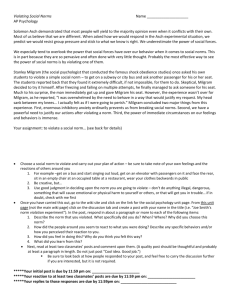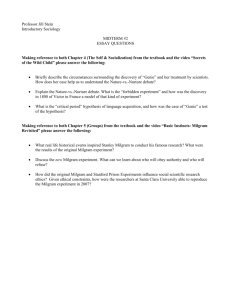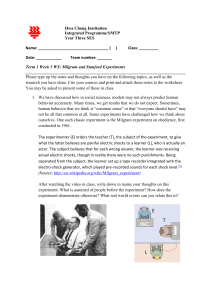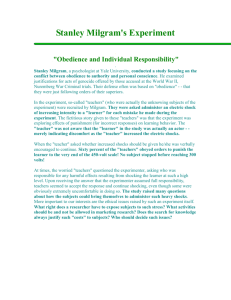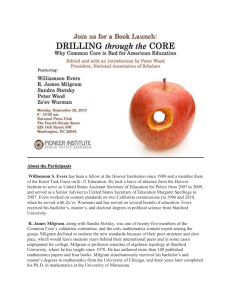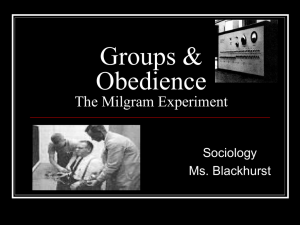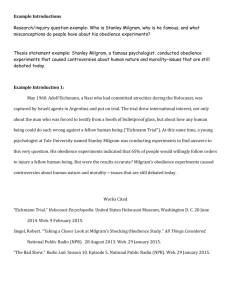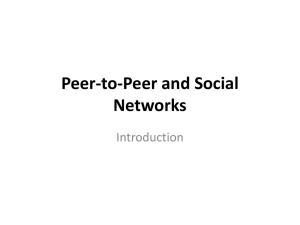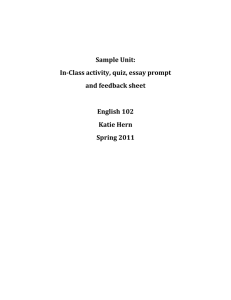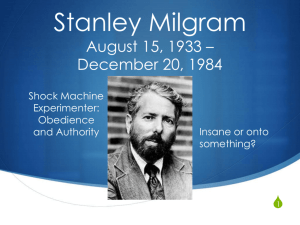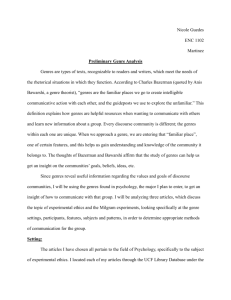Breaking the Norm
advertisement
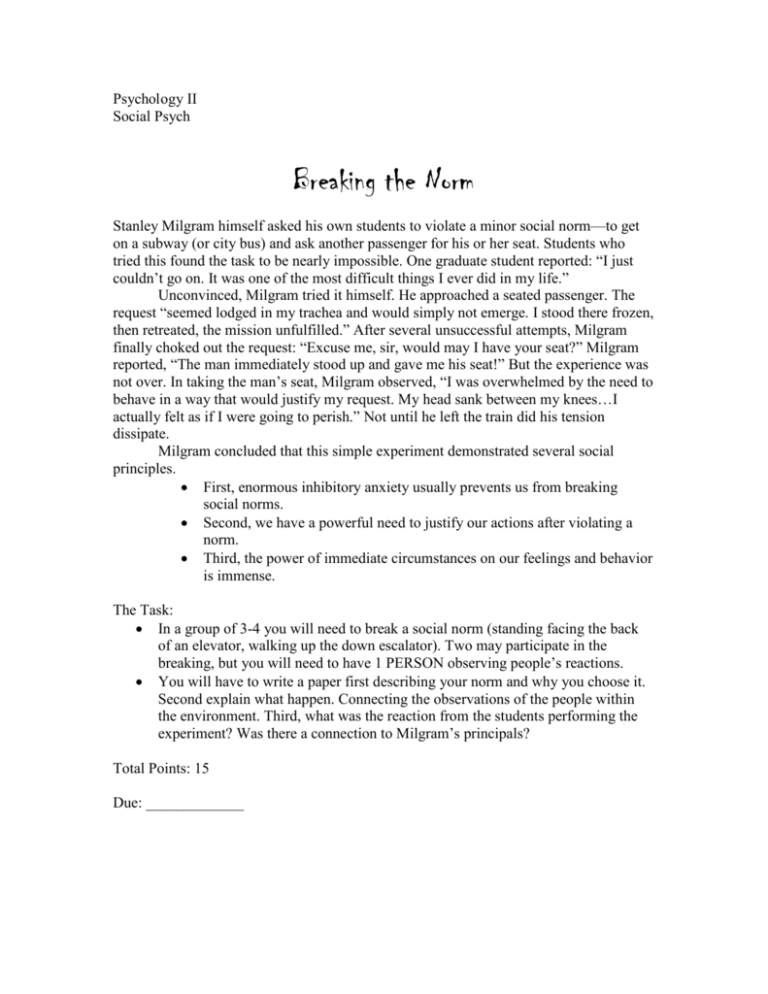
Psychology II Social Psych Breaking the Norm Stanley Milgram himself asked his own students to violate a minor social norm—to get on a subway (or city bus) and ask another passenger for his or her seat. Students who tried this found the task to be nearly impossible. One graduate student reported: “I just couldn’t go on. It was one of the most difficult things I ever did in my life.” Unconvinced, Milgram tried it himself. He approached a seated passenger. The request “seemed lodged in my trachea and would simply not emerge. I stood there frozen, then retreated, the mission unfulfilled.” After several unsuccessful attempts, Milgram finally choked out the request: “Excuse me, sir, would may I have your seat?” Milgram reported, “The man immediately stood up and gave me his seat!” But the experience was not over. In taking the man’s seat, Milgram observed, “I was overwhelmed by the need to behave in a way that would justify my request. My head sank between my knees…I actually felt as if I were going to perish.” Not until he left the train did his tension dissipate. Milgram concluded that this simple experiment demonstrated several social principles. • First, enormous inhibitory anxiety usually prevents us from breaking social norms. • Second, we have a powerful need to justify our actions after violating a norm. • Third, the power of immediate circumstances on our feelings and behavior is immense. The Task: • In a group of 3-4 you will need to break a social norm (standing facing the back of an elevator, walking up the down escalator). Two may participate in the breaking, but you will need to have 1 PERSON observing people’s reactions. • You will have to write a paper first describing your norm and why you choose it. Second explain what happen. Connecting the observations of the people within the environment. Third, what was the reaction from the students performing the experiment? Was there a connection to Milgram’s principals? Total Points: 15 Due: _____________
